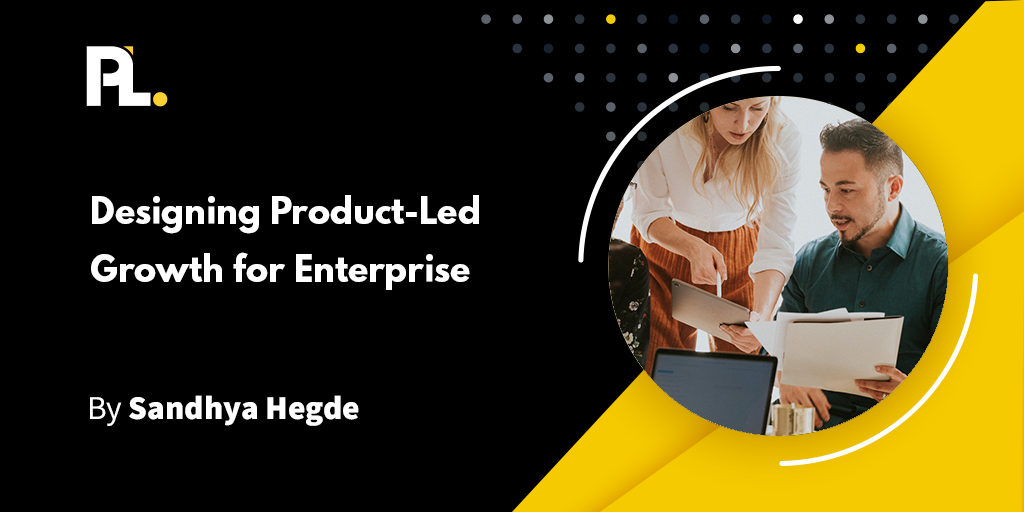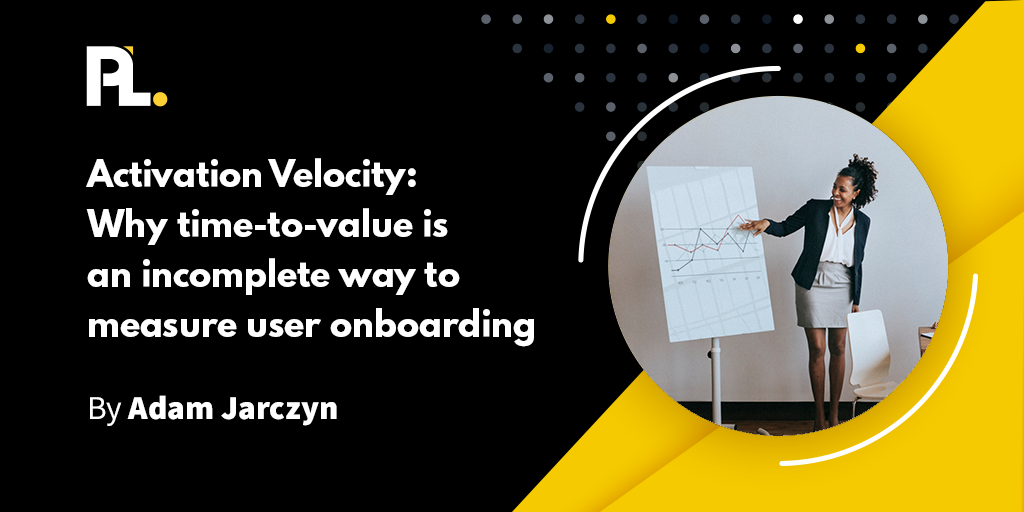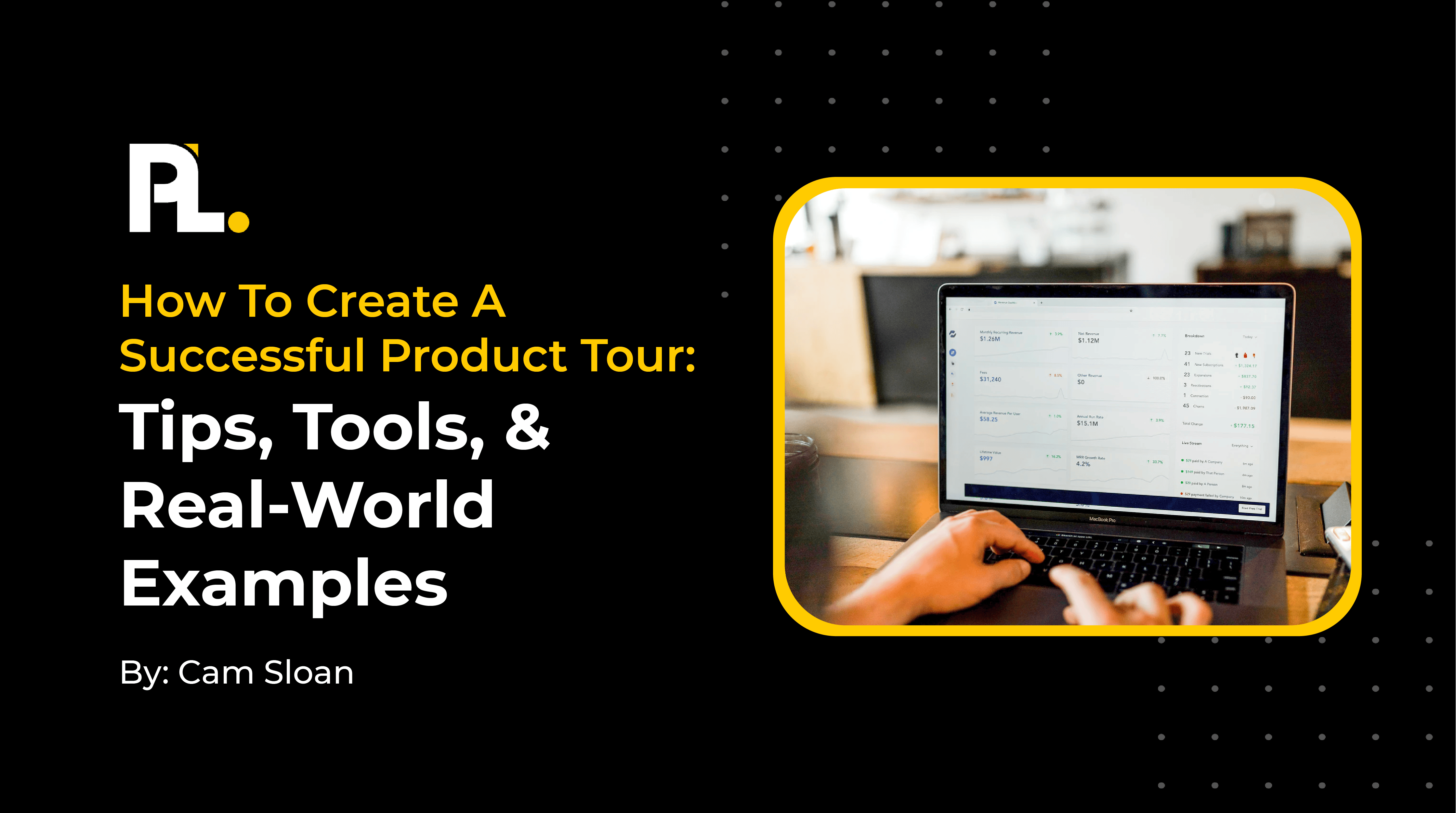
According to our SaaS Growth Benchmarks report, almost 60% of the surveyed companies have already implemented a product-led growth motion. But is this strategy well-suited to achieve your growth goals? Should your company transition from sales-led to product-led?
A deep dive into the building blocks of product-led growth vs. sales-led growth is essential to finding the answers. Each strategy presents its own set of benefits and limitations, and as you'll discover in the article, the path to scaling your SaaS business doesn’t adhere to a universal approach.
The trick is figuring out what’s best for you, which might entail adopting a hybrid model for some.
Let’s get started.
Product-led growth (PLG) model
Product-led growth uses the product as the primary customer acquisition and retention driver.
In a PLG model, customers can try the SaaS product before purchasing or committing to a paid subscription. By offering a free trial or a freemium version, potential customers can experience the value and benefits of your SaaS product. This self-serve approach enables users to explore the product at their own pace, eliminating, in many instances, the necessity for direct sales involvement.
The strategy goal is to create a seamless user experience that efficiently guides users to their "Aha!" moment. Doing so requires a collaborative effort across company departments to understand the user journey, optimize onboarding, and continuously use data and user feedback to iterate.
The best product-led models
The best product-led models give users everything they need to succeed at each stage of their journey.
But reaching this point is hard because your model touches every part of business, including:
- Acquisition: The features you offer for free are fundamental to the commitments you make to users when they sign up.
- Engagement: You're making critical choices about which user challenges to address for free and which ones to monetize.
- Monetization: What to offer at no cost versus what to charge for are crucial.
Dive deeper into the product-led growth methodology with ProductLed founder and bestselling author, Wes Bush in this 50-minute Become the Obvious Choice in Your Market masterclass below.
In every market, only one company becomes the obvious choice. Think of Canva, Atlassian, and HubSpot — these names dominate their specialties.
How can you achieve this for your SaaS company?
In ProductLed's coaching program, Wes guides SaaS founders through a proven three-phase framework that can be implemented and adjusted as needed, ultimately positioning your company as the obvious choice.
Advantages of product-led growth
Product-led growth offers diverse benefits that amplify customer engagement and revenue potential. These advantages include:
- Lower Customer Acquisition Costs: With a product-led growth strategy, you can significantly reduce customer acquisition costs. Instead of relying on expensive marketing campaigns or sales representatives, you can leverage the product's value and features to attract and convert customers.
- Increased Customer Satisfaction: By allowing customers to try a free trial or freemium model of your product before making a purchase, you are allowing them to experience its value firsthand. This leads to higher customer satisfaction as they can make informed decisions based on their experience. PLG further enhances the users’ experience by encouraging continuous improvement and innovation based on customer feedback.
- Faster Time-To-Value (TTV): With a PLG strategy, customers can use your product immediately without requiring lengthy sales cycles or negotiations. This reduces the TTV and achieves their desired outcomes. As a result, they are more likely to become paying customers and stay engaged with your product in the long run.
- Viral Growth: By focusing on delivering a remarkable product experience, you can turn your customers into brand advocates who help spread the word about your product. When customers have a positive experience with your product, they're inclined to share it with others, setting off a chain reaction of viral growth. These valuable word-of-mouth referrals, in turn, become a driving force behind organic growth.
- Informed-Driven Decisions: A product-led growth strategy allows you to gather valuable usage data on how customers use your product. This data can provide insights into user behavior, preferences, and pain points, enabling you to make data-driven decisions to improve your product and drive growth.
Explore deeper insights into the game-changing power of product-led growth in “14 Benefits of Product-Led Growth” on our blog.

Challenges of product-led growth
Just like with any business approach, there are potential challenges that SaaS founders should always remain mindful of. Here are key PLG obstacles to consider:
- Lacking Team Alignment: All departments — Marketing, Engineering, Customer Success, Product Management, etc. — must align on shared success metrics. Without this cohesion, conflicting goals could arise, leading to inefficiencies and missed opportunities.
- Scaling Hurdles: Product-led growth can be highly effective for startups and small businesses, but as companies scale, they may encounter challenges in maintaining the same level of growth. Planning and investing in infrastructure and resources are necessary for sustaining growth. Handling increased demand and maintaining customer support is paramount.
- Adaptability Needed: Agility and responsiveness to feedback and market shifts are inherent to product-led growth. Yet, rigid processes and reluctance to iterate hinder progress. Embracing improvement and adjusting to customer needs and market changes is crucial.
By being aware of these potential PLG roadblocks, companies can proactively address them and iterate to maximize their product-led potential.
Need help choosing which free model is right for your business? Check out our coaching program.
Sales-led growth (SLG) model
Sales-led growth is a traditional business strategy that relies heavily on the efforts of a sales team to drive customer acquisition, retention, and revenue growth. In a sales-led company, the Sales team moves prospects through the sales pipeline and closes deals.
Unlike product-led growth, sales-led growth relies on salespeople's personal touch and expertise to drive conversions. This approach often involves a more hands-on sales process, with sales reps actively engaging with prospects, conducting demos, and negotiating deals.
Sales-led perks
In some instances, a sales-led model has the upper hand over PLG.
Sales-led models are generally more efficient for businesses offering complex or high-touch solutions, especially in industries where customer education and personalized guidance are crucial. PLG, on the other hand, typically works better for products with intuitive interfaces that users can adopt and explore independently.
A company can additionally benefit from a sales-led approach for enterprise sales, where negotiations, customizations, and contract discussions are common. These interactions require the human touch and flexibility that PLG might not provide, as SaaS products in a product-led model are often designed for self-service and rapid adoption.
6 key differences between PLG vs. SLG strategies
A PLG strategy centers on swiftly solving user pain points with a superior product, while SLG highlights the art of selling, with sales teams leading the way.

Let's now delve deeper into the distinctions between these growth strategies below:
1. What drives business
In the product-led growth approach, the primary focus revolves around improving the SaaS product to solve the pain points of ideal users as quickly as possible.
Conversely, in a traditional sales-led model, the primary emphasis is on making the sale. Sales teams take the lead in advocating for their company's product by telling (not showing) consumers its benefits to potential consumers.
2. Initial user engagement
Product-led consumers try before they buy.
For example, consider Canva, which offers free design tools for almost any work or personal occasion. The company’s free templates make the process effortless. As freemium users grasp the value it provides and desire additional features, they can upgrade to enhanced design capabilities or opt for a paid plan.

Sales-led consumers may spend a lot of one-on-one time with a sales rep, but their first engagement with the product is not until a sales demo or after they've paid.
3. Product value
The product-led model revolves around delivering value to the consumer before purchasing, whereas a sales-led model provides product value after the sale.
PLG goes beyond just offering a free trial. The strategy aims to deliver a product that addresses real user pain, offering concrete value that leaves them wanting more.
In contrast, sales reps outline the product's value proposition within a sales-led model. After the final sale, the customer gains access to the product to start experiencing its inherent value.
4. User guidance
A low friction experience in a self-serve product-led model empowers users to explore and onboard independently.
Alternatively, sales representatives are gatekeepers crucial in customer acquisition in a sales-led growth model.
Their role involves:
- Engaging with potential customers
- Understanding their needs and pain points
- Selling the product's features and benefits
- Guiding them through the sales journey
5. How success is defined
Customer success is a critical component of a successful product-led growth strategy. It drives adoption, increases customer advocacy, fuels customer growth, aligns with product development, and enables scalability.
In a sales-led model, success is measured by the Sales team's productivity in converting prospects into paying consumers.
6. Team structure
Product-led teams are organized around leveraging the product to drive business growth. Unlike sales-led models, where teams are often siloed, the Marketing, Product, Sales, Engineering, and Customer Success departments work collaboratively to achieve their goals.
Now that we understand the basics of the PLG and SLG strategies and what makes them different, it's important to recognize that they aren’t fixed in one way.
Certain SaaS companies opt for a hybrid model, combining sales with a product-led foundation. This hybrid approach is the topic of the next section.
Hybrid model
A hybrid product-led sales approach combines elements of a self-serve product-led growth model and a sales-led strategy. In this approach, a company initially emphasizes a self-serve model to attract and convert customers. Still, as revenue plateaus or specific circumstances arise, a sales team is introduced to assist with certain high-touch customer segments or situations.
Several factors prompt the decision to move to a hybrid model. While self-serve models can drive growth up to a point, revenue may eventually stagnate. At this stage, a sales team can help target specific customer needs, close larger deals, and explore new revenue streams.
Shifting to a hybrid model doesn't mean discarding the existing product-led model but rather complementing it with sales efforts to tap into untapped opportunities.
Factors such as company size, revenue growth, investor expectations, and the target market all play a role in determining when the timing is right.
Learn the finer details of the self-serve model, emphasizing the role of sales in “Pros and Cons of Self-Serve Sales Driven Hybrid Model” on our blog.
Refining product-led strategy with sales
While product-led growth emphasizes the self-serve nature of the product, there may still be instances where adding a sales component can enhance the customer experience and drive revenue growth. For example, some customers may require personalized onboarding or have complex use cases that benefit from a consultative sales approach.
Finding a balance between self-serve and human touch is critical to integrating sales alongside your product-led strategy. You can achieve this by introducing a sales-assisted model, where sales teams provide guidance and support to customers when needed—without being the primary driver of acquisition and retention.
A product-led sales strategy can leverage the strengths of both approaches and create a seamless customer journey that combines the efficiency of self-serve with the personalization of human interaction.
For a structured approach to building and scaling this hybrid model, explore the ProductLed System. It’s a practical framework designed to help you identify what to tackle first in your product-led journey.
Not sure where to start? Take the PLG readiness assessment to pinpoint your top opportunities.
You can also schedule a strategy session or work with a certified ProductLed Implementer if you'd like more hands-on support.






















